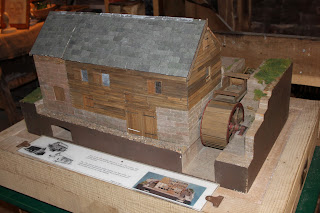Yesterday was Old New Year and millers gathered to wassail the apple trees at Stretton. The trees give us a wonderful harvest of fruit in autumn and their wood can be used to fashion replacement teeth for the gears in the mill. We've recently lost a few of our older trees and replaced them with young trees, all of which are old Cheshire varieties bringing intriguing stories with them. We felt it was right to look after the old trees and the help the younger ones to flourish. And so what better to do than keep the ancient tradition of wassailing the trees to help them bear well in the coming year.
As dusk fell, friends began to gather and share news, all feeling that we were taking part in something "old", a tradition to be kept alive.
We enjoyed mulled cider, keeping us warm against the crisp frost that had been around all day.
Tom told the story of the Apple Tree Man, a folk tale all about the wassail and how trees will look after us if we look after them.
Then we collected toast to hang in the branches for the birds and rattles and bells to drive off the witches before setting off to process through our trees.
We made our way back to the oldest apple tree at the mill, being led through the deepening dark by Tom playing the Apple Tree Wassail on his double pipes.We sang to the old apple tree and poured cider on the roots.
And then it was off down the road to the friendly Carden Arms for food, catching up with friends and music.
We're looking forward to what the year brings for our apple trees and we'll be wassailing the trees again next year as our mill is all about keeping traditions alive.














